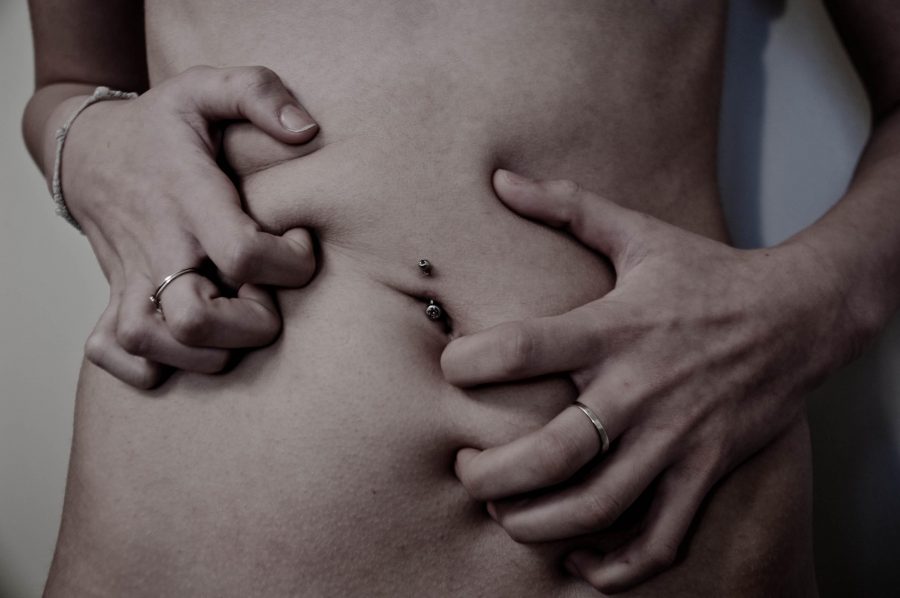Eating gets psychological
March 18, 2015
Photo via flickr.com under Creative Commons license
Eating disorders affect many people, especially adolescents, and are usually triggered by body dysmorphia.
“I was never satisfied with the way I looked. I hated myself. I still kinda do,” my friend CJ* tells me as she picks at her small portion of pasta I know she won’t end up eating. We are at her house, but she looks quite uncomfortable, fidgeting with her hands and moving in her seat so often it seems distracting. I get it. This isn’t a normal conversation two friends would ever really have.
“I used to be fatter,” she sighs, as if she is still fat now. I remember. She looks at me. “Remember when we were younger?” I nod. She keeps talking. I know she’s doing this to distract me from the fact that she hasn’t taken a single bite.
CJ used to starve herself back then, to the point where her parents began to notice, and then after that she counted calories, cutting back to almost 300 a day. I still remember the time she excused herself to go to the bathroom on one of our hangouts similar to this one. Out of curiosity, I had followed her, and since she didn’t turn the faucet on — something she usually did on her long, covert bathroom trips — I heard her throw up the contents of her stomach into the toilet.
The sound of her cough snapped me back to reality and I heard the faucet finally turn on. I would later learn that she would study herself in the mirror, pinch herself in all the places she thought were fat, then come out of the bathroom pretending to be all right. And this went on for months.
Eating disorders and body dysmorphia (a fixation on one or more parts of the body) have become increasingly common in adolescents, due in part to frequent exposure to images and whatnot in the media that collectively promote a subliminal message — one that implies that you have to look a certain way (be skinny) to be considered attractive.
According to WebMD, “Weight obsession affects millions of teenagers today, especially girls. At any given time, one out of every seven women has or is struggling with an eating disorder. One study a few years ago found that 36% of adolescent girls — more than one out of every three — believed they were overweight while 59% were trying to lose weight.
“More than 90% of people with an eating disorder are girls. Teenage boys, though, also have body image concerns. Many boys strive for the perfect body by dieting or by doing compulsive exercise.”
Eating disorders, including anorexia nervosa and bulimia nervosa, are defined as psychological disorders involving extreme disturbances in eating behavior.
Anorexia nervosa (AN) is characterized by inconsistencies with a healthy body weight, obsessiveness with losing weight, a fear of gaining weight, and a lack of acknowledgement of current low body weight. Anorexia nervosa has two subcategories: the restricting type and the binge/purge type. With restriction, an individual will refuse to eat or reduce food intake and over-exercise to compensate for the meager amount of calories consumed. In binging/purging, an individual will overeat and may also purge to make up for it later.
However, bulimia nervosa (BN) is different from anorexia nervosa binge/purge type. People diagnosed with AN binge/purge type have a body weight significantly below whatever is considered healthy for their height. Those with BN can have a weight ranging from normal to overweight/obese. Aside from that, BN and its anorexia counterpart have similar, if not the same, characteristics — recurrent binge-eating followed by purging.
There are other types of eating disorders, but AN and BN are centered specifically on weight loss. People usually develop an eating disorder because they want to lose weight and are extremely dissatisfied with their body image.
Guidance counselor Susan Howe says that she has “no actual experience,” when it comes to dealing with teenagers who have an eating disorder. However, she believes that there is “way too much emphasis on a person’s looks,” and that is what drives people, especially impressionable adolescents, to develop eating disorders and fit into the criteria to be considered attractive.
“People with eating disorders go beyond just eating,” Howe says. “It’s not just a disorder, it’s a psychological problem. Usually it’s because they have low self-esteem, or even that they’re doing it for someone else, to look good.”
I asked her which gender was more afflicted with eating disorders, to which she responded, “Definitely girls more than boys. Society sets high standards, and the pressure is put more on girls.”
This is true — it brings me back to a time where CJ and I would spend countless hours at each other’s house, poring over fashion magazines and whining about how skinny the girls were and how much we wanted to look like them.
Now we are in her dining room, talking about life and other things teenage girls like to talk about. We have already cleared the table, and neither of us brings up the topic of food. But when it’s time for me to go home, she walks me to the door and I look at her, as if I am saying, “Eat something,” but I’m just saying goodbye. And she says “See you soon,” and I know she actually means, “okay.”
*Name has been changed to protect identity.
